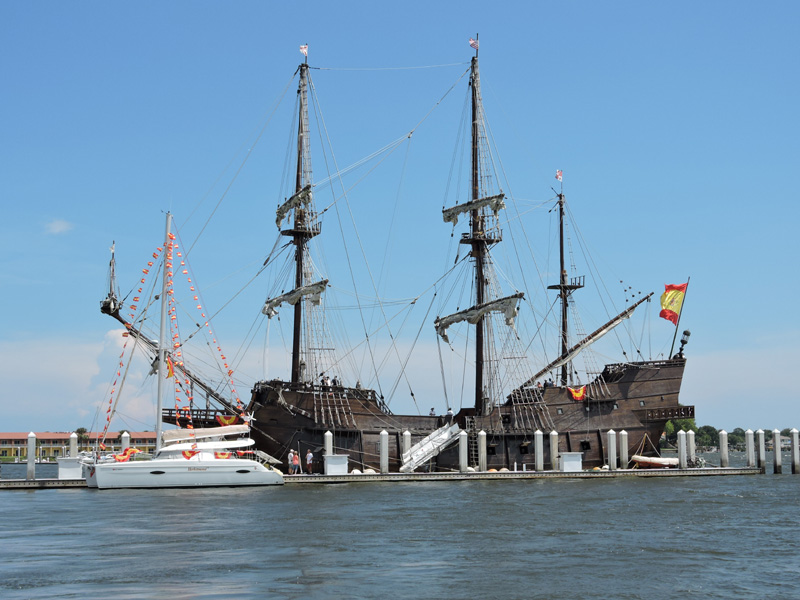
Pedro Menéndez de Avilés and His Galleon (17) |
 |
|---|
Source: Photo by WTL© (2015) on site (on a clear day) in St. Augustine. Image: About his own galleon, the San Pelayo, Menéndez de Avilés said this on August 15, 1565: "Es tan fuerte y buen marinero" (It is such a sturdy and seaworthy sailing ship). Note that he named the river near the founding site of St. Augustine the San Pelayo River. The San Pelayo carried 26 married men, their 26 wives and children, and its stores included, among many other things, 15,344 gallons of wine and 140 bushels of beans and garbanzos. The main deck was 107 ft. long; the widest part (beam) was 32 ft.; the keel was a whopping 80 ft. deep; its capacity was about 700 tons. During the golden age of Spanish expansion, galleons carried payloads between 500 and 1,200 tons; they were armed with 12 cannons; they measured from 130 to 200 ft.; and they carried up to 150 people. His his book, El Galeón (2010), Ignacio Fernández Vial says this: "During the 16th century, these galleons helped the Spanish Crown to further discover and explore American coasts. Shortly after, these broad, capable vessels turned into the real protagonists of inter-oceanic trade between Spain, America and the Philippines. The galleons loaded and transported American and Asian goods in their holds, as well as new aesthetic concepts, men and ideas, back and forth [across] the oceans" (n.p.). Humanities Question: Please speculate on the role Spanish galleons played in the entire enterprise of the so-called Columbian Exchange, including, especially in terms of the humanities that developed into the humanities of Latin America. For a synopic and mostly reliable online article on the Columbian Exchange, see the Wikepedia article. |
|---|
 |